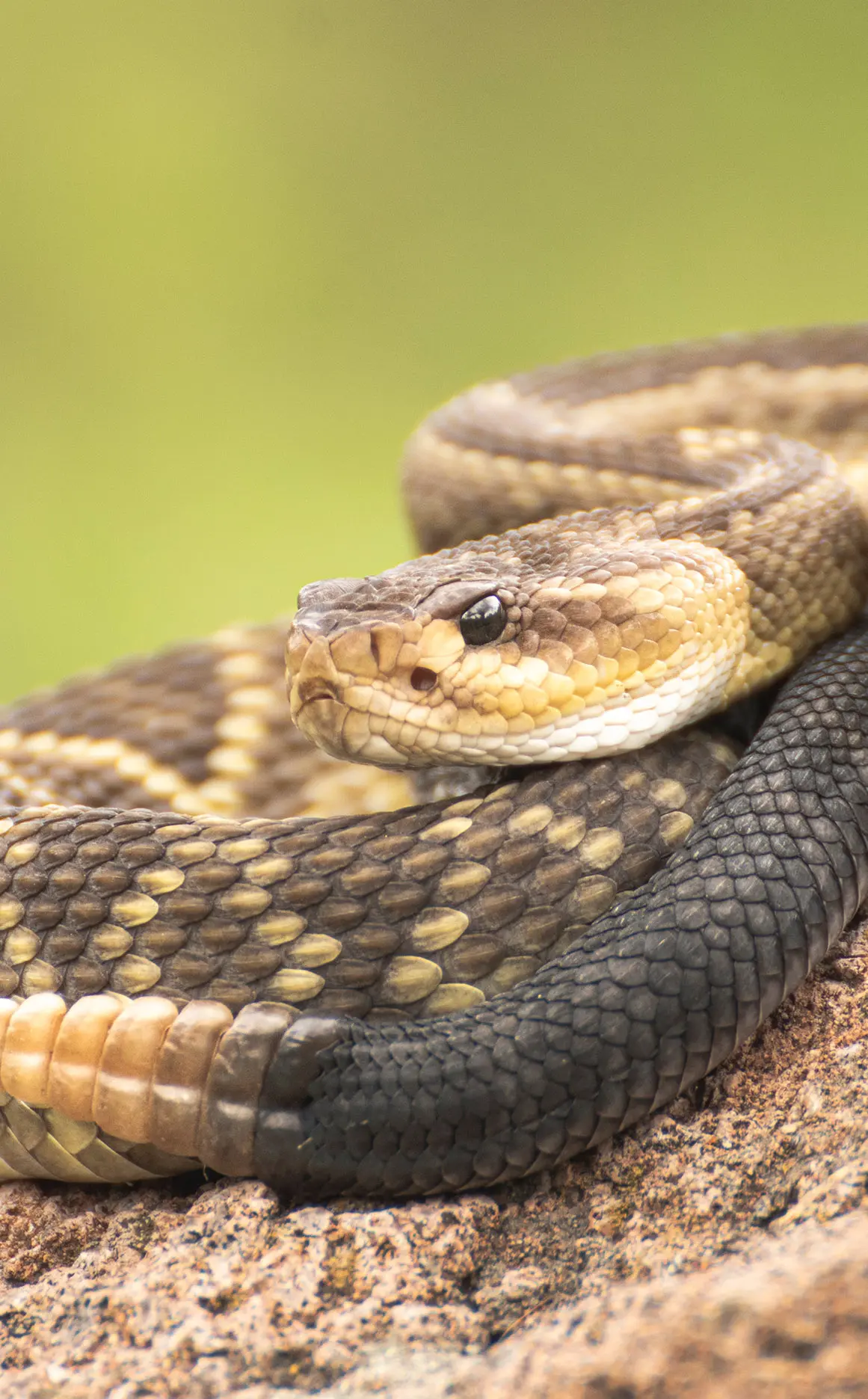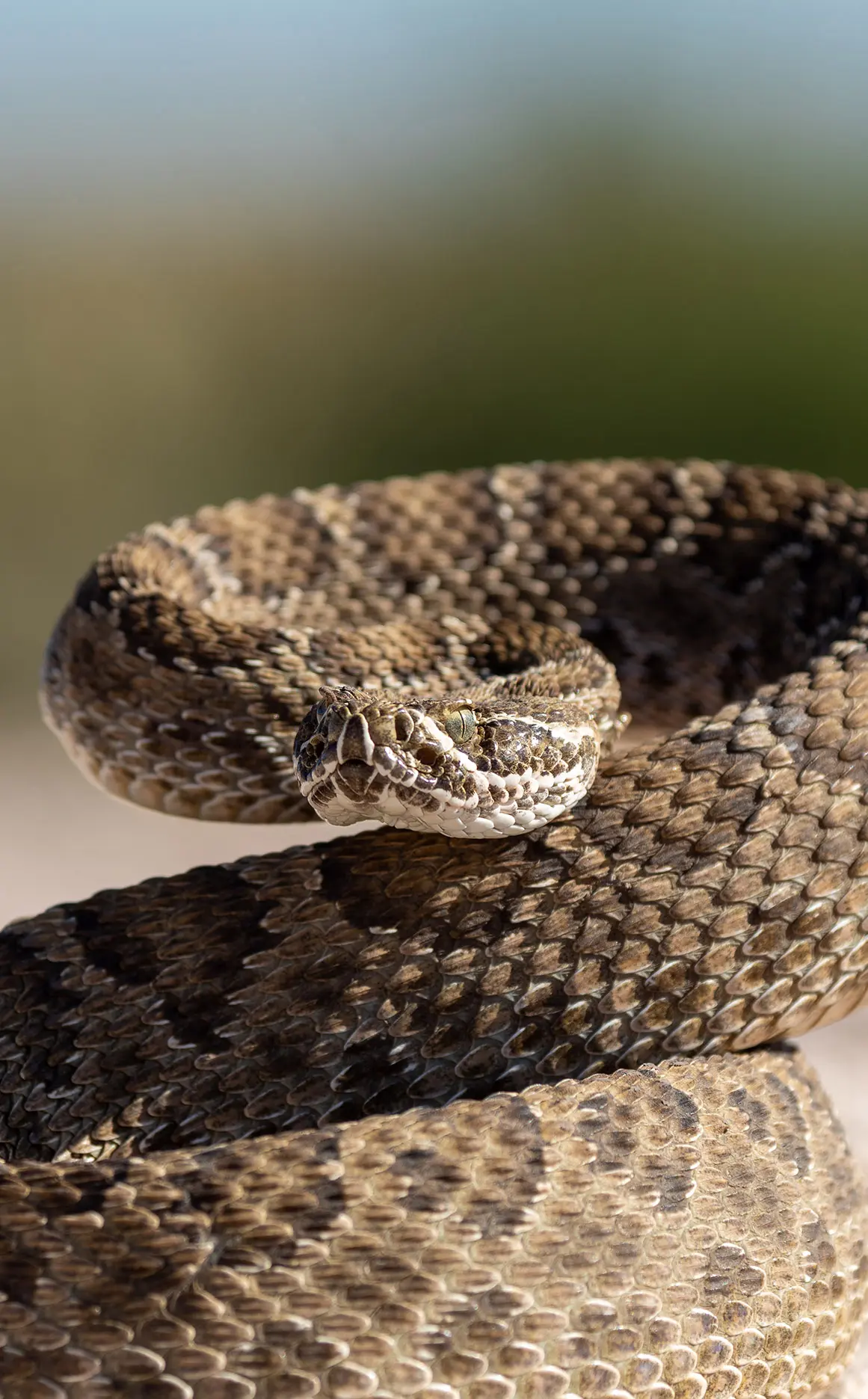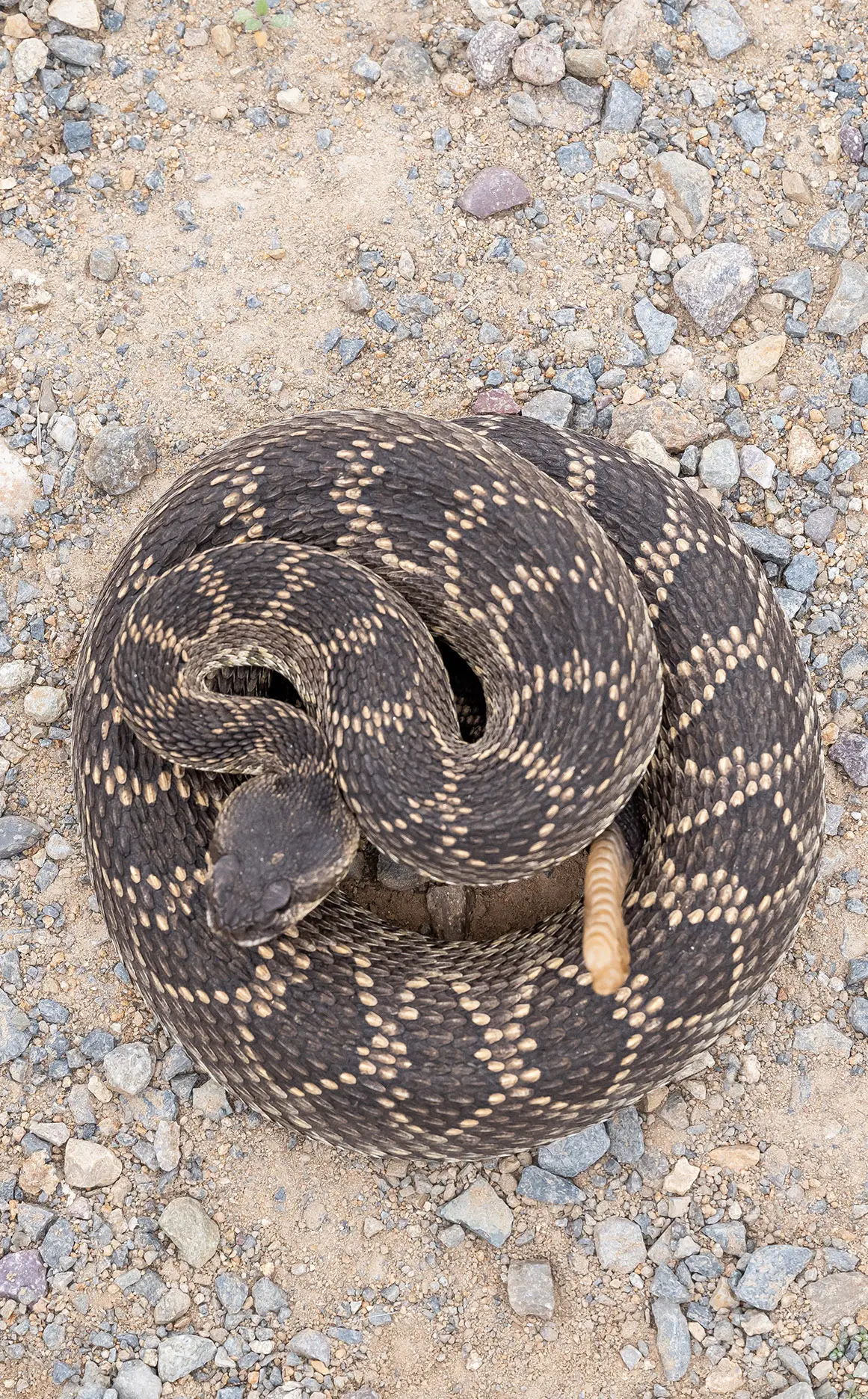About Our Training
We Train the Tailed to Avoid the Scaled.
We use live rattlesnakes so we can train your dog to avoid them. The reason we do this is that nothing smells like a live rattlesnake except a live rattlesnake. If we were to use dead frozen snakes, that would work. Your dog would avoid every dead frozen snake that he encountered in the desert.
Arizona has more species (different types) of rattlesnakes than anywhere else in the United States. The actual number varies depending on the source. Arizona Game and Fish Department says there are 13 species. However, they don't count the ten (10) subspecies of Arizona rattlesnakes. So, counting main species and subspecies, there are 23 different kinds of rattlesnakes. (Arizona Rattlesnakes.)
Dogs trained on our rattlesnakes--western diamondbacks--have detected and avoided the following other species of rattlesnakes: Mohave, Tiger, Speckled, Black Tail, Grand Canyon Rattlesnake, Sidewinder, Twin Spotted, Prairie, and Northern Pacific rattlesnake (in Canada). If you're keeping track, that is 9 out of the 13 species of rattlesnakes in Arizona.
Based on this feedback, it appears as though all rattlesnakes smell enough alike, so the dog can detect them.
Gopher snakes, also called bull snakes, do not smell like a rattlesnake. They are a completely different genus and species. Beware of trainers who use gopher snakes or any other harmless snake to train the dog to avoid rattlesnakes. Trained this way, the dog may avoid a nonvenomous snake but may go up to a rattlesnake because of the different smell. Also, many times, it is the sound of the rattle that gets the dog's attention and piques their curiosity. Do your homework and ask lots of questions. If you don't like the trainer's answers, find someone else!



Notice to Owners
In this type of training, I use an electronic collar--a shock collar--on the dog. A transmitter that I control, sends a signal to the collar, which produces a harmless but attention-getting shock. An appropriate amount of shock is required to get the message that rattlesnakes are dangerous across to your dog. I base the setting of the transmitter on my experience and knowledge of canine behavior. All dogs react differently to the shock. Some just duck their heads; others will yell and jump. If you are afraid that this type of training is too harsh and do not wish to see your dog undergo a brief moment of being uncomfortable to avoid a potentially lethal—and certainly very painful--bite from a rattlesnake, do not contact me.
Our rattlesnakes are securely caged, and there is no danger to either the dog, the owner, or the snake.
A customer posted this account of her training session on her blog. I think it is one of the best descriptions of the process I've read.
In our training, we want the owner and dog to work together as a team. In this way, you will learn what your dog's reaction is to detecting a rattlesnake. Every dog's reaction is different. Reactions vary from a very subtle detour around an area where a snake is located to your dog climbing up your leg and trying to get into your pocket.
Don't worry about the dog associating the shock from the collar with you and holding a grudge. Dogs don't think that way. The association will be with the smell and perhaps the sound of the rattlesnake. Just remember, not all rattlesnakes buzz when they are disturbed. They may not move at all, but they all smell. Your dog's acute sense of smell will detect the snake long before you see or hear it. (Success stories) Your dog's ability to smell the snake and your ability to read your dog's behavior when he finds the viper is what we are counting on to keep you both safe in snake country. When it's all said and done, you, as your dog's pack leader, should be the one to administer corrections. If your dog seems to resent being corrected, we can recommend some excellent obedience classes.
Why Dogs Don’t Learn from Snake Bites
Sadly, untrained dogs that have been bitten by a rattlesnake and have recovered, are still at risk of being bitten a second time. The dogs simply do not associate their pain and suffering with the snake. We recently trained a dog that had been bitten twice in one week. Five to ten percent of the dogs we train have been bitten before coming to us for training. They have all marched up to the first cage and stuck their noses right down next to the snakes. The snakes are kept inside the cage, and the dog is protected by two layers of woven stainless steel wire. The dogs do not think the cage has anything to do with the training. They are not concerned with the cages, only the rattlesnakes within the cage. Remember, dogs learn to avoid rattlesnakes primarily by SMELL.
Our experience shows that many dogs remember this training for years. However, there is no way to predict which dog will remember and which will get lazy and not trust their nose. After two years of being a 'town dog,' my own little terrier did exactly that; he didn't trust his nose and had to be reminded about the snake smell. A yearly retest is recommended, at least the first year after the initial training. Then you can decide on how often to retest. The cost for this yearly retest is $40 when you come to us in New River.


While this training has proven to be very effective, it cannot be 100% guaranteed. We do our very best to teach the dog that rattlesnakes are dangerous and to stay away from them. No one can guarantee that after your dog is trained, they will never be bitten. There are just too many variables to consider: wind direction, where the snake is, what the dog is doing, cover and terrain, etc. However, after this training, the odds of not being bitten highly favor the dog.
For Viper Voidance to continue to provide this valuable service to dog owners, you will be asked to sign a waiver of liability form.
Call (480) 215-1776 to schedule your training session.

